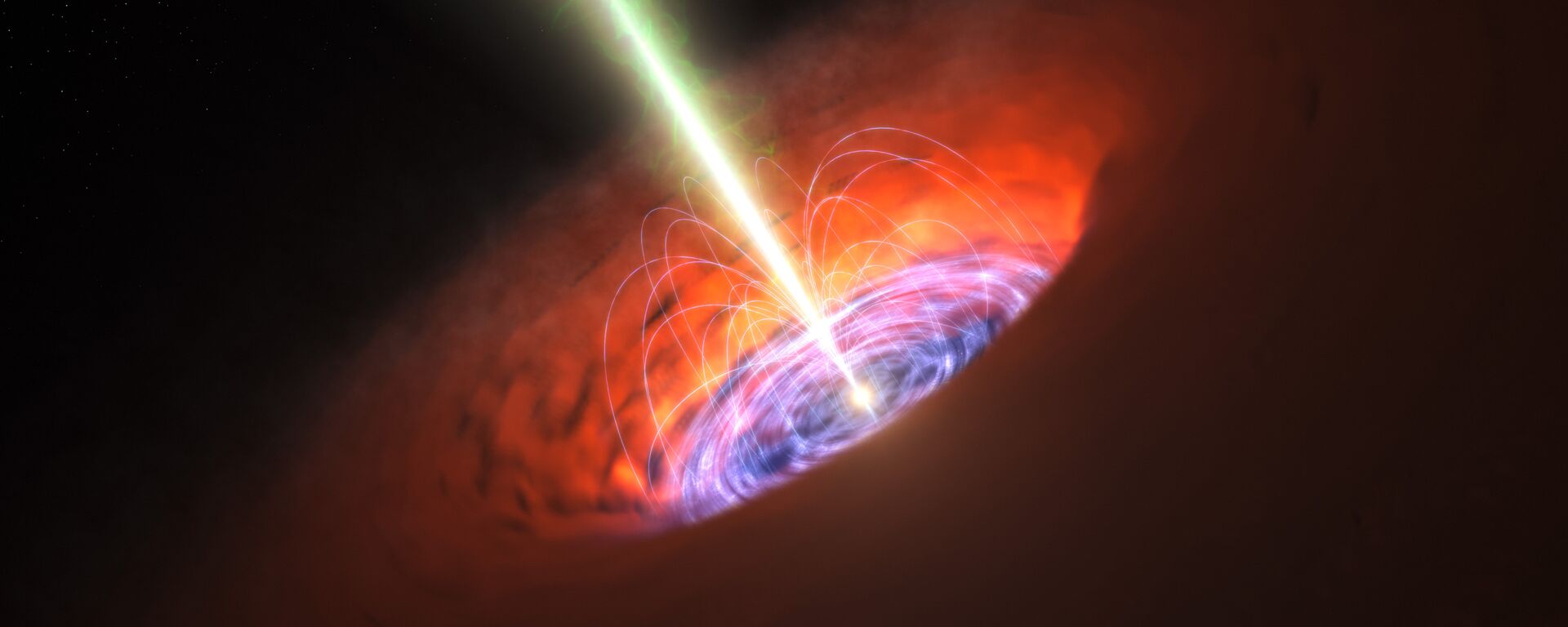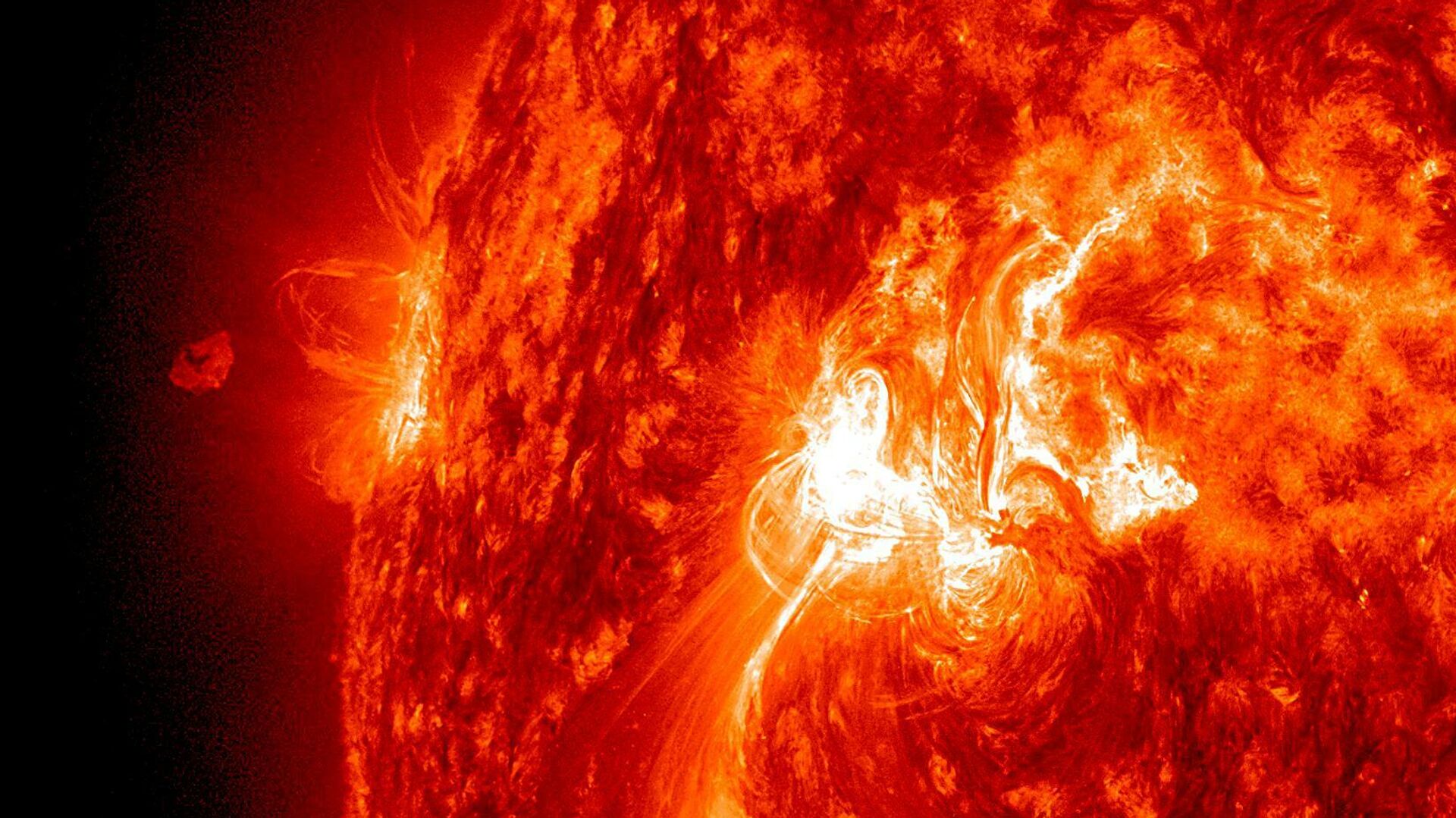https://sputnikglobe.com/20231206/giant-sun-hole-bigger-than-60-earths-spewing-solar-wind-towards-our-planet--1115430208.html
Giant Sun 'Hole' Bigger Than 60 'Earths' Spewing Solar Wind Towards Our Planet
Giant Sun 'Hole' Bigger Than 60 'Earths' Spewing Solar Wind Towards Our Planet
Sputnik International
Spaceweather.com has unveiled information about a visible coronal hole, which is a massive dark spot on the Sun's surface. The fissure is now emitting intense streams of cosmic wind, a type of radiation that is remarkable due to its unusually high speed.
2023-12-06T15:21+0000
2023-12-06T15:21+0000
2023-12-06T15:21+0000
beyond politics
science & tech
society
earth
jupiter
sun
space exploration
space
https://cdn1.img.sputnikglobe.com/img/07e6/01/1d/1092597281_0:26:1650:954_1920x0_80_0_0_be1929e6807dbd6addc19a276253d7ef.jpg
The coronal hole formed on December 2, and reached a maximum width of 800,000 km. To put it in perspective, this vast expanse is five times the size of Jupiter and a staggering 60 times larger than Earth. Scientists believe that the fissure's size is unprecedented at the current stage of the solar cycle.Initially, researchers predicted that a dark spot like this would lead to a moderate geomagnetic storm on Earth, which could potentially disrupt radio communications. However, the cosmic wind turned out to be less intense than anticipated. Despite this, its passage did trigger polar aurorae in high-latitude regions.Coronal holes form when magnetic fields of the Sun open up, causing material from the star (also known as stellar matter) to be sent out into space. Consequently, these areas appear as dark spots since they are colder and have lower density than the surrounding space plasma.Solar activity has been steadily increasing throughout the year as the Sun is slowly approaching the explosive peak of its 11-year cycle. However, coronal holes can occur at any time throughout the cycle. The other thing that left the scientist puzzled is the fact that the new hole is close to the equator. Even though they normally appear further towards the poles of the Sun.Astronomers have previously estimated that solar activity will peak in early 2024.
https://sputnikglobe.com/20231205/scientists-detect-likely-culprit-of-strange-radiation-bursts-from-heart-of-our-galaxy-1115413007.html
earth
jupiter
Sputnik International
feedback@sputniknews.com
+74956456601
MIA „Rosiya Segodnya“
2023
Sputnik International
feedback@sputniknews.com
+74956456601
MIA „Rosiya Segodnya“
News
en_EN
Sputnik International
feedback@sputniknews.com
+74956456601
MIA „Rosiya Segodnya“
Sputnik International
feedback@sputniknews.com
+74956456601
MIA „Rosiya Segodnya“
sun, hole on sun, space, space exploration
sun, hole on sun, space, space exploration
Giant Sun 'Hole' Bigger Than 60 'Earths' Spewing Solar Wind Towards Our Planet
Spaceweather.com has unveiled information about a visible coronal hole, which is a massive dark spot on the Sun's surface. The fissure is now emitting intense streams of cosmic wind, a type of radiation that is remarkable due to its unusually high speed.
The coronal hole formed on December 2, and reached a maximum width of 800,000 km. To put it in perspective, this vast expanse is five times the size of Jupiter and a staggering 60 times
larger than Earth. Scientists believe that the fissure's size is unprecedented at the current stage of the solar cycle.
Initially, researchers predicted that a dark spot like this would lead to a moderate geomagnetic storm on Earth, which could potentially disrupt radio communications. However, the cosmic wind turned out to be less intense than anticipated. Despite this, its passage did trigger polar aurorae in high-latitude regions.
Coronal holes form when magnetic fields of the
Sun open up, causing material from the star (also known as stellar matter) to be sent out into space. Consequently, these areas appear as dark spots since they are colder and have lower density than the surrounding
space plasma.

5 December 2023, 18:39 GMT
Solar activity has been steadily increasing throughout the year as the Sun is slowly approaching the explosive peak of its 11-year cycle. However, coronal holes can occur at any time throughout the cycle. The other thing that left the scientist puzzled is the fact that the new hole is close to the equator. Even though they normally appear further towards the poles of the Sun.
Astronomers have previously estimated that solar activity will peak in early 2024.





